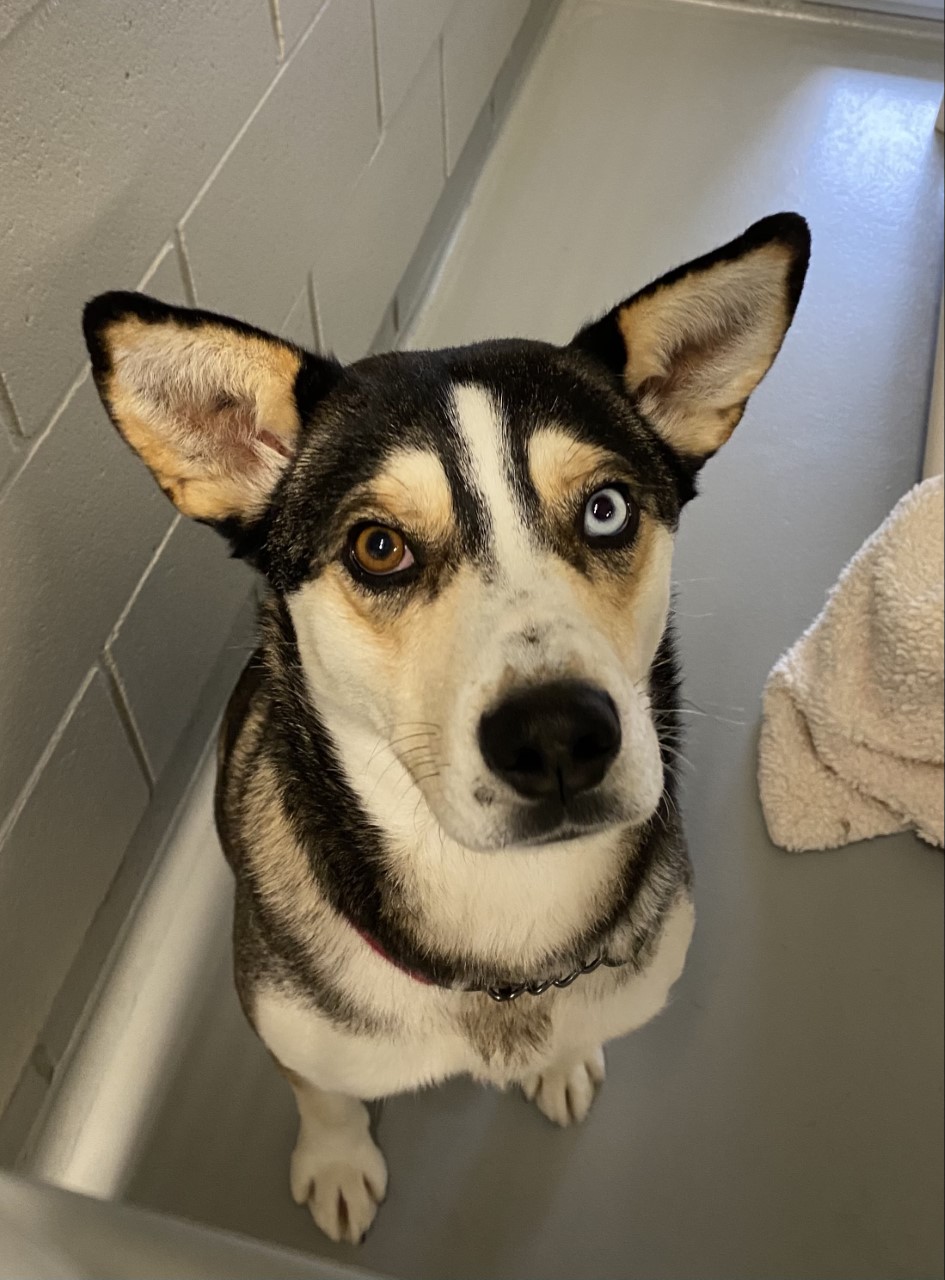Giant kidney worm encounter leads to a paper published in the Journal of Parasitology
by Ontario SPCA and Humane Society | News | June 15, 2021

When a surgeon with the Ontario SPCA and Humane Society discovered a giant worm inside one of their canine patients during a routine surgery four years ago, no one imagined that it would eventually lead to a paper on the subject to help other veterinary professionals.
Members of the Ontario SPCA and Humane Society’s Shelter Health & Wellness team recently co-authored a paper on giant kidney worms, which was published in the Journal of Parasitology – an honour that might seem icky, but is very important to help advance the treatment and prevention of this parasite.
Ontario SPCA’s first encounter with a giant kidney worm was in 2017 during a spay procedure on a dog from Northern Ontario who came into our care to find a new home. When the surgeon made the incision, they discovered a large worm.
While the Ontario SPCA’s encounters with giant kidney worms are relatively new, this worm species is known worldwide as a potential threat to animals. The worms are “giant” because they can grow up to 40 feet long! Dogs can acquire giant kidney worms from ingesting a host of the worm like a raw frog, fish or worm.
After years of research and discovery, we have determined that if left untreated, giant kidney worms can eat their way through the tissues of their host (the dog) and can destroy the animal’s kidneys.
Journal of Parasitology
Giant Red Kidney Worm (Dioctophyma renale) Screening and Treatment Protocol and Aberrant Worm Migration In Dogs From Ontario and Manitoba, Canada was written by authors Tyler Greer, Dr. Anick Amaro, Dr. Magdalena Smrdelj, who is the Chief Veterinary Officer at the Ontario SPCA, and Dave Wilson, who is the Senior Director of Shelter Health and Wellness at Ontario SPCA.
“This paper began as an effort to rehome many canine friends from Northern Ontario and Manitoba with the support of the Northern communities involved, several agencies, veterinary professionals, volunteers, donors and so many Society staff members across all departments,” Smrdelj says.
“As we delivered care to these friends, we discovered the presence of this fascinating parasite in several of them, and our paper was born,” Wilson adds.
They would like to acknowledge and celebrate all the support and encouragement they received throughout the lengthy paper process. There are several individuals in particular who contributed to the success of the paper, including Dr. Jennifer Budarick, Dr. Julia Hughes, Kate MacDonald, Monica Seto and Lisa Jones Bogie.
“There are so many others who deserve our recognition and sincere thanks,” Wilson says. “We are also very grateful to all the dogs who offered their resilience and their faith in us.”
To learn more about the Ontario SPCA’s work in the North, visit animalnorthnetwork.ca
Categories
Testimonial
Three cheers for the volunteers!
Three cheers for the volunteers! Keep doing wonderful work, thank you!